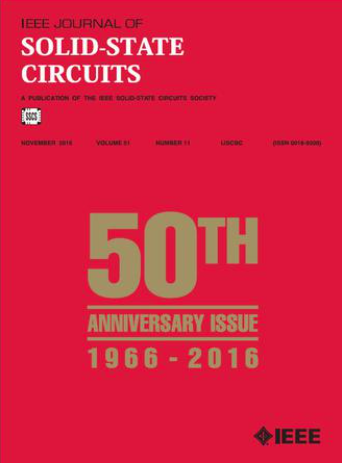RXO-LDPC: A Physics-Inspired Relaxation Oscillator-Based Solver Leveraging Six-Body Spin Interactions for Soft Decoding of LDPC Codes
IF 5.6
1区 工程技术
Q1 ENGINEERING, ELECTRICAL & ELECTRONIC
引用次数: 0
Abstract
Physics-inspired computing harnesses continuous-time (CT) operation, massive parallelism, and direct compute load mapping to coupled CMOS-based spins to accelerate solving complex optimization problems. This work advances the field by introducing relaxation oscillator (RXO)-low-density parity check (LDPC), a combinatorial optimization problem (COP) engine that natively supports six-body spin interactions for efficient, robust, and one-shot oscillator-based soft decoding of LDPC codes. The proposed RXO spins feature a capacitor-DAC-based initialization structure, allowing precise mapping of soft information to initial spin phases for high-performance decoding. A crossbar-based feedback system facilitates six-body spin interactions by directly coupling spins based on the COP graph. Implemented in 28-nm CMOS technology, the prototype achieves a frame error rate (FER) and bit error rate (BER) ofRXO-LDPC:一种利用六体自旋相互作用实现LDPC码软解码的基于物理启发的弛豫振荡器求解器
受物理启发的计算利用连续时间(CT)操作、大规模并行性和直接计算负载映射到耦合的基于cmos的自旋,以加速解决复杂的优化问题。本工作通过引入松弛振荡器(RXO)-低密度奇偶校验(LDPC)来推进这一领域,这是一种组合优化问题(COP)引擎,它本身支持六体自旋相互作用,用于高效、鲁棒和基于一次振荡器的LDPC码软解码。所提出的RXO自旋具有基于电容dac的初始化结构,允许将软信息精确映射到初始自旋相位,从而实现高性能解码。基于交叉杆的反馈系统通过基于COP图的自旋直接耦合来促进六体自旋相互作用。该原型采用28纳米CMOS技术实现,在7 db信噪比下,帧误码率(FER)和误码率(BER)分别为1.36{\times}10{^{-6}}$和1.89{\times}10{^{-7}}$。对于信噪比为2 - 5db的信道,测得的误码率比置信传播(BP)译码低3个数量级以上。测量的能量效率为7.28 pJ/bit,超过了最先进的解码器的标准化效率。经过超过1亿个解码周期的评估,该系统在广泛的信噪比、电源电压、温度和不同的芯片上都表现出可靠的性能。这些测量结果突出了基于rxo的体系结构作为直接解决具有多体自旋相互作用的cop的加速器的潜力。
本文章由计算机程序翻译,如有差异,请以英文原文为准。
求助全文
约1分钟内获得全文
求助全文
来源期刊

IEEE Journal of Solid-state Circuits
工程技术-工程:电子与电气
CiteScore
11.00
自引率
20.40%
发文量
351
审稿时长
3-6 weeks
期刊介绍:
The IEEE Journal of Solid-State Circuits publishes papers each month in the broad area of solid-state circuits with particular emphasis on transistor-level design of integrated circuits. It also provides coverage of topics such as circuits modeling, technology, systems design, layout, and testing that relate directly to IC design. Integrated circuits and VLSI are of principal interest; material related to discrete circuit design is seldom published. Experimental verification is strongly encouraged.
 求助内容:
求助内容: 应助结果提醒方式:
应助结果提醒方式:


